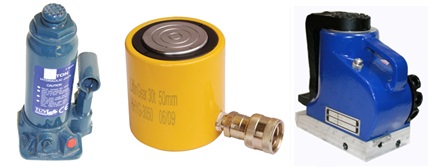
First of all, let's clarify the difference between hydraulic jacks and other types of jack. You may well have a jack in the boot of your car, but this is probably a man-powered device, designed to lift your vehicle in the event of a breakdown or emergency.
Hydraulic jacks, on the other hand, tend to be found in more industrial environments, such as garages and workshops. These heavier-duty products, while still primarily used on cars and other vehicles, have a far wider range of uses than standard mechanical jacks - for example, hydraulic jacks are sometimes used to lift building foundations during construction projects.
But how do hydraulic jacks work?
Some of the hydraulic jacks that we sell here at SLG can lift loads of 30 tonnes or more - clearly, this kind of lifting power would be difficult to produce with sheer manpower!
So how do the jacks do it? There's a lot of complicated scientific theory behind hydraulics, but here's a simplified explanation:
- Inside the jack's hydraulic cylinder, powered pumps apply pressure to a reservoir of oil.
- Because liquids cannot be compressed, the oil is pushed through the cylinder and into a larger chamber.
- Thanks to Pascal's Law (we told you there was a lot of science behind this stuff!), the pressure in the wide chamber remains the same as it was in the narrow one. This pressure is what forces the jack - and, by extension, whatever you're using the jack to lift - upwards.
Does that make sense? This is an extreme simplification, of course, and different types of hydraulic jack (bottle jacks, cylinder jacks, etc.) work in slightly different ways. Still, this should give you a rough answer to your question!

